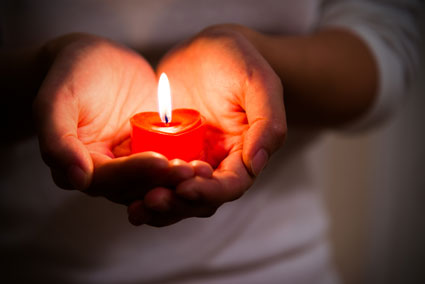Thankfully, only two types of spiders are venomous in the United States -- the black widow and the brown recluse spider. Adults and parents of children should take the time to memorize what these little creatures look like, and since there are only two, that's relatively easy.
Just because there are only two extremely venomous spiders found in North America doesn't mean adults, or parents of small children, should not be concerned with other types of spider bites.
Any person who is allergic or sensitive to any type of an insect or spider bite may experience adverse reactions. If in doubt, call your doctor or pediatrician. Never take chances. For now, let's concentrate on the Black Widow and the Brown Recluse Spider.
The Black Widow
Black widow spiders are commonly found throughout North America. They're not always easy to find, and most of the time, black widow spider bites are caused by careless human activity. Adults or children reaching into dark places, where the black widow likes to hide, are very common bite scenarios.
One of the most recognizable aspects of the black widow spider is, of course, its solid, black and shiny color, hence its name. On the underside of the black widow spiders, you'll find a red hourglass-shaped mark.
Contrary to common belief, the venom of a black widow spider (unless you're allergic) is not enough to cause death. Common mythology regarding black widows is that their venom is more than 10 times stronger than the venom of a rattlesnake. It's not. However, bites of the black widow spider can be dangerous, and potentially fatal, to small children, those who are infirm, or, in many cases, the elderly. Still, fatalities from black widow bites are relatively rare.
In humans, a black widow spider bite may produce general muscle aches and nausea. Not much bigger than a paper clip, the black widow spider lives an average of one to three years and is considered one of the most venomous spiders in North America. It's generally known that female black widows eat the male of its species.
The black widow is equipped with a set of fangs. It spins large webs to capture prey, which most commonly consists of small insects, such as caterpillars, mosquitoes, flies,and beetles.
You may be loath to do it, but do look at photographs of the top and underside of black widow spiders in order to more easily recognize their shape, color, and the red hourglass on their underbelly. As mentioned before, most bites caused by black widow spiders are due to people sticking their hands into dark areas, including woodpiles, corners of garages, and in leafy piles of debris.
Interesting Facts About the Black Widow
Interestingly enough, only the female black widow spider is venomous. Here are a few facts about black widow spiders that may help you avoid them:
-
The black widow grows to an adult length of between 8 mm and 10 mm (about half an inch long)
-
Approximately five different species of black widow spiders are found throughout North America.
-
Black widows are carnivores, or cannibals, and will eat each other.
-
The silk of black widows is among the strongest of all spider families.
The Brown Recluse Spider
The brown recluse spider is another common and venomous spider found in the United States. It's also known as the violin spider. Their small, brown body and long, spindly legs give them their name. It's known as a recluse spider because it prefers dark hiding places, and is typically found indoors or outdoors beneath stationary objects in human habitats.Adults and children should know that the brown recluse spider is not particularly aggressive, but does tend to lash out and bite when it's accidentally touched, or when it's disturbed. The web of a brown recluse spider is fairly irregular and loosely constructed. The brown recluse can live up to six months without water or food, hiding by day and crawling around at night.
The bite of a brown recluse spider is nearly invisible at first, but the severity of the aftereffect of its venom depends on the person's sensitivity and the amount of venom released. In many cases, an adult or child may not even know they've bitten until several hours later; the area will be painful and often inflamed.
One of the main concerns with a brown recluse spider bite is that it causes necrosis -- or tissue death -- at the bite site. This typically starts on the surface of the skin. Soft tissues become swollen, reddened, and painful. Later, other symptoms may develop -- including nausea, itching, shivering, fever, and vomiting.
It's very important for adults or parents who believe they, a loved one, or a child has been bitten by a brown recluse spider to seek the advice of a doctor. If symptoms become serious, visit your nearest emergency room. The necrosis caused by a brown recluse bite may cause a skin ulcer that takes several months to heal.
Interesting Facts About the Brown Recluse Spider
Like the black widow, the brown recluse spider is interesting -- as long as you don't get too close. They like to be left alone, and they like to live alone too.
-
The venom of the brown recluse is very harmful to humans. They prefer dark hiding places, including closets, bedding, or clothing that has been left in a garage or in closets for quite some time.
-
They generally catch prey in webs that look like woven sheets.
-
Many brown recluse spiders can be found in natural environments, including inside tree holes bored by birds or other insects, as well as beneath rocks.
Adults and children should be taught to avoid sticking their hands in dark and damp places. Before turning over rocks, wood, lumber, or any object that has been left alone for a long period of time, put on a thick pair of gloves and turn objects over very carefully to look for signs of black widow or brown recluse spiders.
A number of other spiders are found in North America, including wolf spiders, camel spiders, and a variety of garden spiders. We'll talk more about those in just a bit.
Conclusion
Use common sense when working outdoors, camping, or when cleaning a garage, which are the most common places to find black widow and brown recluse spiders. Yes, you may even find them in your home from time to time; but by keeping a clean house and inspecting furniture, clothing, and bedding on a regular basis, you'll more than likely avoid being bitten, or even seeing these small creatures.
Become familiar with the most common varieties and continue to research these spiders and insects on your own. Yes, their descriptions and photographs may gross you out, but for your protection, and the protection of your children, it's important to recognize different species and determine whether they're harmful or harmless.

























